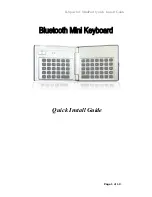
Features of the Forte and Forte7
3-4
Real Time Control
SW Pedals
Sustain
Sostenuto
Soft
SW
Ped 3
SW
Ped 2
SW
Ped 1
Wheels/Variation
Var
Pad/Wah
Enable
Pitch
Mod
More
Less
Reverb
Amount
Delay
Amount
Mod Amount
or Depth
Dist Amount
Drive/Other
Reverb Enable
Delay Enable
Mod/Chorus
Enable
Distortion/Other
Enable
AmpEnv
Attack
Filter Freq
or EQ
Filter Res
or EQ
AmpEnv
Decay
or
Release
AmpEnv
Release
or
Trem/Vib Rate
AmpEnv
Impact
Trem/Vibrato
LFO Shape
Rel. Samples
On/Off
Variation 2
Layer On/Off
Variation 3
Layer On/Off
Effects
Synthesis
Forte Controller Conventions
CC Pedals
CCPed 1
CCPed 2
SW1
SW2
SW3
Expression
Wah
Tremolo Amount/
Pad Filter Freq
Pitch
Up/Down
Sliders
The nine sliders on the left of the front panel are assigned to control different sound
parameters and effects for each Program. In Multi Mode, Sliders A-D default to controlling
volume for Zones 1-4. The sliders can also send MIDI continuous controller values to
external MIDI equipment. Each slider has a handy visual LED ladder that indicates its
current setting when a new Program or Multi is selected.
In Program Mode, most programs have Slider A assigned to a filter or EQ parameter in order
to control the brightness of the sound. In all Programs and most Multis, Slider I controls
reverb amount, while Slider H usually controls a second effect, such as delay/echo amount.
The remaining sliders have different assignments depending on the selected Program/Multi.
See the Controller Conventions diagram above for controller assignments commonly used by
Programs.
If you select a KB3 Program, the nine sliders act like tonewheel organ drawbars. The labeling
below the sliders applies to the KB3 Programs, indicating the drawbar registers that are
modified by the slider.
For KB3 Programs, the sliders operate in a similar way to a Hammond organ, i.e. pulling the
slider towards you increases the drawbar amount. To help illustrate this, the Forte inverts the
LED ladders to indicate the drawbar (slider) position.
















































